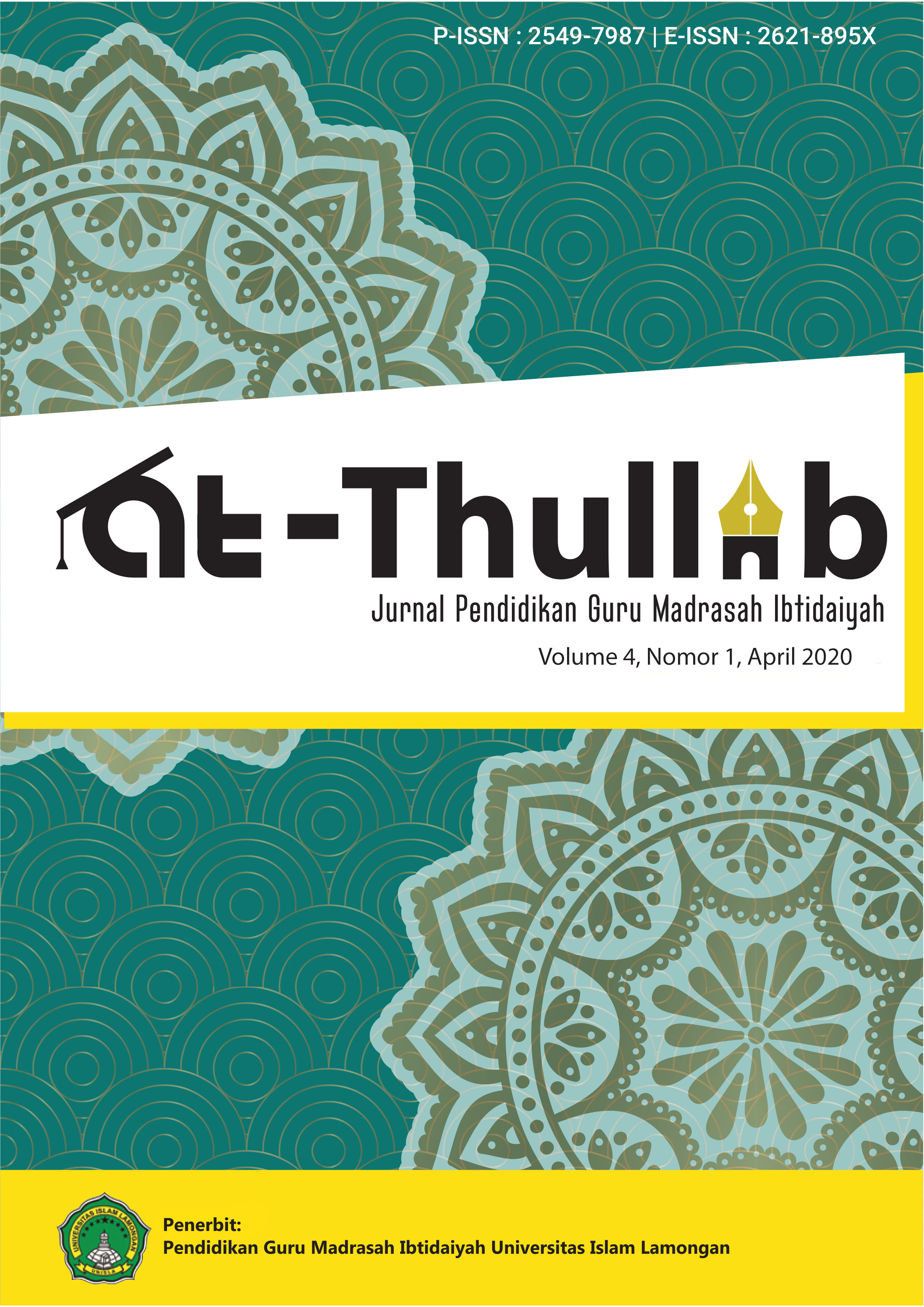PENGARUH PENDEKATAN KONTEKSTUAL DENGAN STRATEGI REACT TERHADAP HASIL BELAJAR KOGNITIF MATERI BANGUN RUANG PADA SISWA KELAS V SDN 1 GONDANG
DOI:
https://doi.org/10.30736/atl.v4i1.116Abstract
The lack of the cognitive learning on the material of building is background of this research. It is proved of almost students that getting of lower score in criteria completeness of minimum (KKM). One of alternative solution from this problem is apply of contextual approach with REACT strategy. The purpose of this research to describe there is any influence between contextual approach and REACT strategy for the result of lesson special on building material. This research is quantitative research design with quasi experimental. The research show that there is any influence between contextual approach and REACT strategy for the cognitive learning. The analysis of data t-test show that score Sig.(2-tailed) < 0,05 is 0,000 < 0,05.
Keywords: contextual approach, react strategy, cognitive learning, building space
Downloads
References
Amir, A. (2014). Pembelajaran Matematika SD dengan Menggunakan Media Manipulatif. Forum Paedagogik, VI(01), 72–89. https://doi.org/10.2214/AJR.10.5577
Arifin, A.T.; Karono; dan Sutarto, H. (2014). Keefektifan Strategi Pembelajaran React Pada Kemampuan Siswa Kelas VII Aspek Komunikasi Matematis. Kreano Jurnal, 5, 91–98.
Ibda, F. (2015). PERKEMBANGAN KOGNITIF : TEORI JEAN PIAGET, 3, 27–38.
Jaliah, R., Irawati, R., & Sujana, A. (2017). Pengaruh Pendekatan Kontekstual Berstrategi Relating , Experiencing , Applying , Cooperating , Transferring ( React ), (20), 1091–1100.
K. E. Lestari & Yudhanegara, M. R. (2015). Penelitian Pendidikan Matematika. Bandung: PT Refika Aditama.
Khabibah, S. (2006). Pengembangan Model Pembelajaran Matematika dengan Soal Terbuka untuk Meningkatkan Kreativitas Siswa Sekolah Dasar. Program Pascasarjana Unesa.
Nurmisanti. (2017). I DENTIFIKASI H ASIL B ELAJAR R ANAH K OGNITIF S ISWA P ADA M ATERI, 2(1), 17–18.
Prastowo, A. (2011). Menyusun Rancangan Pelaksanaan Pembelajaran (RPP) Tematik Terpadu Implementasi Kurikulum 2013 unutk SD/MI. Jakarta: Kencana.
Rahman, M. (2015). PENGARUH MODEL CREATIVE PROBLEM SOLVING ( CPS ) DALAM PEMBELAJARAN MATEMATIKA TERHADAP, 3(April), 67–74.
Ratumanan, G., & Laurent, T. (2011). Penilaian Hasil Belajar pada Satuan Pendidikan edisi kedua. Bandung: Alfabeta.
Shoimin, A. (2014). 68 Model Pembelajaran Inovatif dalam Kurikulum 2013. Yogjakarta: Ar-Ruzz Media.
Sofan, A. & I. K. A. (2010). Kontruksi Pengembangan Pembelajaran Pengaruhnya Terhadap Mekanisme dan Praktik Kurikulum. Jakarta: Prestasi Pustaka.
Solichin, M. (2017). ANALISIS DAYA BEDA SOAL, TARAF KESUKARAN, VALIDITAS BUTIR TES, INTERPRETASI HASIL TES DAN VALIDITAS RAMALAN DALAM EVALUASI PENDIDIKAN, 2, 192–213.
Sugiyono. (2015). Metode Penelitian Pendidikan (Pendekatan Kuantitatif, Kualitatif, dan R&D),. Bandung: Alfabeta.
Downloads
Published
How to Cite
Issue
Section
License
Authors who publish with this journal agree to the following terms:
The journal allow the authors to hold the copyright without restrictions and allow the authors to retain publishing rights without restrictions. Authors retain copyright and grant the journal right of first publication with the work simultaneously licensed under a Creative Commons Attribution-ShareAlike 4.0 International License. that allows others to share the work with an acknowledgement of the work's authorship and initial publication in this journal.
Authors are able to enter into separate, additional contractual arrangements for the non-exclusive distribution of the journal's published version of the work (e.g., post it to an institutional repository or publish it in a book), with an acknowledgement of its initial publication in this journal.
Authors are permitted and encouraged to post their work online (e.g., in institutional repositories or on their website) prior to and during the submission process, as it can lead to productive exchanges, as well as earlier and greater citation of published work (See The Effect of Open Access).
The journal allows third parties (readers, researchers, and others) to share and adapt the material in line with the license. In addition, the material must be given appropriate credit, provided with a link to the license, and indicate if changes were made. If authors remix, transform, or build upon the material, they must distribute their contributions under the same license as the original.













